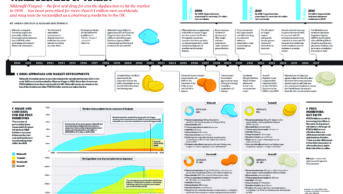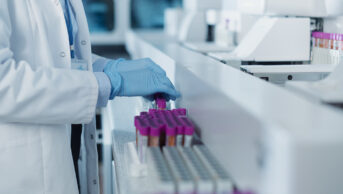
Shutterstock.com
Drugs developed to improve erectile dysfunction have improved sexual function and activity in 80% of users, but did not translate into satisfaction with sex and relationships for older men, a study has found.
The launch of the oral phosphodiesterase type 5 inhibitors (PDE5i), such as Viagra (sildenafil), Cialis (tadalafil) and Levitra (vardenafil), have made a difference to sex lives of men with erectile dysfunction. But a Manchester University (UK) study found even when older men are successfully treated for their erectile dysfunction, their increases in sexual activity and function did not always improve their perceptions of sex and relationships.
In this real-world study, which was part of the English Longitudinal Study of Ageing (ELSA), 7,079 men completed the Sexual Relationships and Activities Questionnaire (SRA-Q). The questionnaire covered attitudes to sex, sexual activities, behaviours, problems and concerns, and current sexual partnerships. The analysis focused on 2,612 men who had provided complete data on erectile function and PDE5i use, and were aged 51–87 years.
Levels of erectile dysfunction vary with age, from 1–10% in men aged under 40 years to as much as 50–100% in men aged over 70 years. Increasing rates of dysfunction is linked with an ageing population, and with rising levels of obesity and type 2 diabetes. Erectile dysfunction has a major effect on well-being, including confidence and maintaining relationships, and as people’s health and active lifespans lengthen, issues like erectile dysfunction will become more significant.
The ELSA results, published in the International Journal of Impotence Research
[1]
, showed that more than 80% of the men using PDE5 inhibitors to treat erectile dysfunction said that the drugs had a positive or very positive impact on their sex lives. The men with treated erectile dysfunction reported more sexual activity, all the way through from kissing to intercourse, even compared with those with no erectile dysfunction. Despite these positive outcomes, those who were successfully treated still had higher levels of concern about their sexual activity and relationships.
The researchers conclude that there is a need for a more holistic treatment, including management of the patient’s expectations, support from the patient’s partner, appraisal of psychological and relationship issues, and assessment and education relating to broader health and well-being issues in older people.
Jill Cooper, psychosexual therapist/specialist nurse at South West Yorkshire Partnership NHS Foundation Trust, agrees that erectile dysfunction is a complex disorder, with psychological and social factors compounded by the physical symptoms. “It’s very rare that erectile dysfunction has just one cause — the physical problems can be improved but they may still have issues of performance anxiety, or about how they feel about themselves,” she says. “Because of this, medication won’t be the only answer for many men, and should be combined with counselling.”
However, GPs and other healthcare professionals may not have the time to explore these issues in more depth. There could be a role here for the pharmaceutical companies, by providing better educational materials, as well as for pharmacists, who could provide community support when the drugs are dispensed.
The study was funded by the National Institute on Aging and a consortium of UK government departments.
References
[1] Lee DM, Nazroo J & Pendleton N. Erectile dysfunction and phosphodiesterase type 5 inhibitor use: associations with sexual activities, function and satisfaction in a population sample of older men. International Journal of Impotence Research 2015. doi:10.1038/ijir.2015.4.


